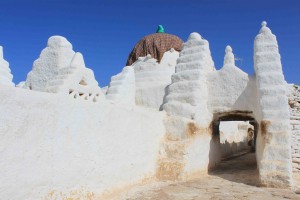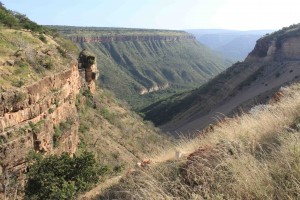Dire Sheik Hussein
The holy shrine of Sheik Hussein is located in the northeastern part of Bale on the edge of the Wabe Shebele River, 180km from the Bale Mountains National Park headquarters. The shrine of Sheik Hussein is named after a Muslim holy man called Sheik Hussein Bin Malka, who was respected for his religious teaching, high devotion and miraculous deeds. According to local legends, he was born in the 12th century and lived for 250 years, 70 of which he spent in the shrine. Pilgrims from all over the country come on foot, horseback and by mule from up to 1,000km away to pay homage and to partake in a ceremony organized in memory of their religious leader. The pilgrimage takes place twice a year: in June to commemorate the anniversary of the death of Sheik Hussein and in October to celebrate the birth of the prophet Mohammed. The pilgrimage depends on the lunar calendar, so the exact date varies each year.
The shrine is located at the end of town and is surrounded by whitewashed walls. Tucked behind the shrine is Zemzemdure, a lime green, algae-covered pond where local people gather holy water to cure ailments. Buried within the shrine are Sheik Hussein’s daughter and son. Jewara, dust from the ground in the burial rooms, is rubbed on foreheads and necks as a blessing. Guides are mandatory and can be found outside the main gate; prices should be agreed upon before entering. Shoes are removed and left outside; long pants and long-sleeved shirts should be worn. Women should wrap shawls around their waists. See directory for further information.
After the celebration, some of the pilgrims continue on to the holy cave of Sof-Omar, located 164km from the shrine.
Sof-Omar Cave
The caves of Sof-Omar are located about 115km from the Bale Mountains National Park headquarters and 95km from the zone’s capital of Robe. It is one of the longest underground caves in Africa, with a total length of over 1.5km. The meandering Web River lies in an entrenched gorge, 150m below a level basalt plateau. The river gorge is spectacular for its depth and for the limestone cliffs that line it. The caves were carved out of the limestone by the Web River, which has changed course over time, creating an accessible passage and carving out ornate and immense pillars, domes and chambers. Fossilized mollusks can be found within the large limestone blocks.
The full walk through the caves is 1.7km and takes three to four hours. From December to May, the river is low enough to cross, although water can be waist-deep in some places. Look out for the bats that hang overhead and the eels that live below.
The name Sof-Omar is derived from a Muslim holy man who lived in the cave with his daughter. It is a place of worship for Ethiopian Muslims: two holidays are celebrated each year where around 1,000 people gather. The first occurs for 15 days in May and the second soon after in June. Because they depend on the moon, exact dates vary each year.
Vervet monkeys frequently pass close to the cave and are likely to steal any food left unattended. The countryside around the Sof-Omar caves abounds with wildlife such as dik-diks, lesser kudus, leopard tortoises, rock hyraxes, as well as more than 50 species of birds, including the endemic and elusive Salvadori’s seedeater. See directory for further information.
Wabe Shebele Gorge
Arguably one of the most dramatic gorges in Ethiopia, the views of the Wabe Shebele Gorge are breathtaking. When passing through the gorge on this little travelled road, it may be hours before another car is seen. The gorge winds into a vast uninhabited lowland. Reaching the brink of the gorge, a gigantic canyon- like formation slithers 1,000m below. The road snakes through the gorges, providing fantastic views, then twists down through a second and third gorge until it reaches the Wabe Shebele Bridge. The three sections each have their own distinctive flora and fauna. Wildlife sightings may include rock hyrax, klipspringer and leopard. There are places to camp around the first and second gorge.
Gasera Gorge:
The Gasera gorge was carved several million years ago by the Wabe Shebele River, one of the longest rivers in southeast Ethiopia, which flows towards Somalia and eventually sinks into the vast sands of the Somalia plain. However, before leaving Ethiopia, these fast moving waters created two of the most beautiful gorges in the Bale region: Gasera and Wabe. In addition to beautiful surroundings, lammergeyer (bearded vultures) can be seen at fairly close range as they float over the gorges. It is also possible to meet the Werdube tribes who specialize in swimming and planting fruits along the river edge. The most popular way to explore the Gasera gorge is to drive on the new gravel road from Gasera town to Endeto on the way to Addis.



